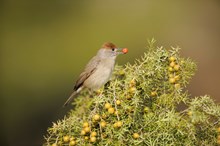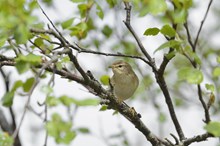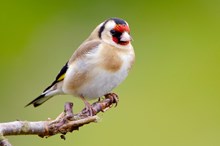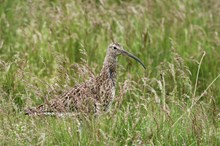11 January, 2024
Scotland’s terrestrial breeding bird numbers show effects of climate change
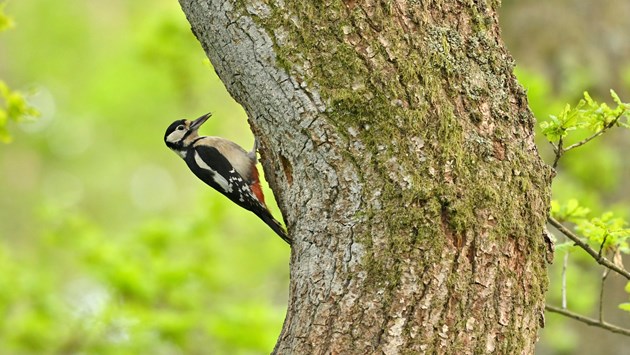
A new report from NatureScot has shown that the effects of hotter and wetter weather are creating significant changes to the numbers and species of birds thriving in urban, woodland, upland and farmland habitats. Climate change, which has seen wetter summers and warmer winters in Scotland, has caused increases to some bird populations and decreases for others.
Woodland birds have seen the largest increases, with farmland and urban birds showing slight increases, demonstrating that our warmer summers are attracting some terrestrial birds that would not normally venture north. Eighteen of the 23 species in the Scottish woodland indicator have increased since 1994. The biggest increases, of over 500%, are for chiffchaff, blackcap and great spotted woodpecker. Bullfinch, great tit, wren, tree pipit, willow warbler, and song thrush have also increased by more than 50%. The willow warbler is an example of Scotland starting to be seen as a climate refuge for certain species now that we are closer to its preferred temperatures.
The greatest long-term increases in farmland birds have been for goldfinch (+358%), whitethroat (+128%), great tit (+120%) and magpie (+104%), making these species more than twice as abundant on farmland as they were in 1994. There have been some substantial long-term decreases in other farmland bird populations, however, including declines of more than 50% for kestrel, greenfinch and lapwing, and 25-50% declines for oystercatcher, rook, pied wagtail and skylark.
On the other hand, Scotland’s upland birds are faring the worst, with a steady decrease since 1994 due in large part to increasing summer rainfall. Twelve of the 17 species in this category have seen their population drop. Black grouse, curlew and dotterel have declined by more than 50%, with several factors, including climate change, forest expansion, and changes in land management practices such as grazing and predator control - behind this shift.
Simon Foster, NatureScot Trends and Indicators Analyst said:
“Climate is one of the key drivers of change for Scotland’s breeding birds, and this new report on the populations of our upland, woodland, farmland and urban species is evidence of the effect our changing climate is having on our biodiversity. These changes tend to favour common, generalist species such as goldfinch and magpies which can mask real and significant changes in rarer or more specialist species. The report shows how our weather today will affect bird populations in future years. With extreme weather such as flooding and heat becoming more prevalent, we must ensure that improving Scotland’s nature and habitats uses the latest science to help deliver the best results. Working with volunteers and scientists gives us the vital information needed to do this.”
“There are many inspiring initiatives in Scotland working to improve the fortunes of terrestrial breeding birds, including the Working for Waders project, which is achieving targeted action for upland bird populations. The introduction of greater woodland diversity; increased activity from farmers helping to create rich habitats for our farmland bird populations; and peatland restoration schemes providing an all year round water source even during sustained periods of drought, increase invertebrates across the restored moor, an important food resource for chicks and adult birds. Such vital actions are the foundations of how we mitigate the effects of climate change on Scotland’s biodiversity for generations to come, and therefore must be intensified if we are to reverse and restore these declines.”
The Terrestrial Breeding Birds Indicator 1994 - 2022 official statistic report shows that while the combined population for 66 species of Scotland’s terrestrial breeding birds increased steadily until the mid-2000s, it has since declined - in some cases dramatically. Terrestrial breeding birds are a good indicator of overall biodiversity, due to their quick responses to variations in habitat quality, through changes in their breeding, survival or dispersal behaviour.
Learn more about Scotland's Biodiversity Indicators
Ends.
Contact information
- Name
- NatureScot Media
- Telephone
- 0131 316 2655
- media@nature.scot
Notes to editors
Smoothed indices are a statistical way of removing the year-to-year fluctuations that naturally appear, for example because of weather conditions or sampling variations, to allow the underlying trend to be more easily seen.
The data used in the report primarily come from the British Trust for Ornithology (BTO), Joint Nature Conservation Committee (JNCC) and Royal Society for the Protection of Birds (RSPB) Breeding Bird Survey (BBS).
Official statistics are produced by professionally independent statistical staff in accordance with the Code of Practice for Official Statistics.
NatureScot is Scotland's nature agency. We work to enhance our natural environment in Scotland and inspire everyone to care more about it. Our priority is a nature-rich future for Scotland and an effective response to the climate emergency. For more information, visit our website at www.nature.scot or follow us on X at https://x.com/NatureScot
’S e NatureScot buidheann nàdair na h-Alba. Bidh sinn a’ neartachadh àrainneachd na h-Alba agus a’ brosnachadh dhaoine gu barrachd suim a chur ann an nàdar. Tha e mar phrìomhachas againn gum bi nàdar na h-Alba beairteach agus gun dèilig sinn gu h-èifeachdach le èiginn na gnàth-shìde. Tha an tuilleadh fiosrachaidh aig www.nature.scot no air X aig https://x.com/NatureScot


